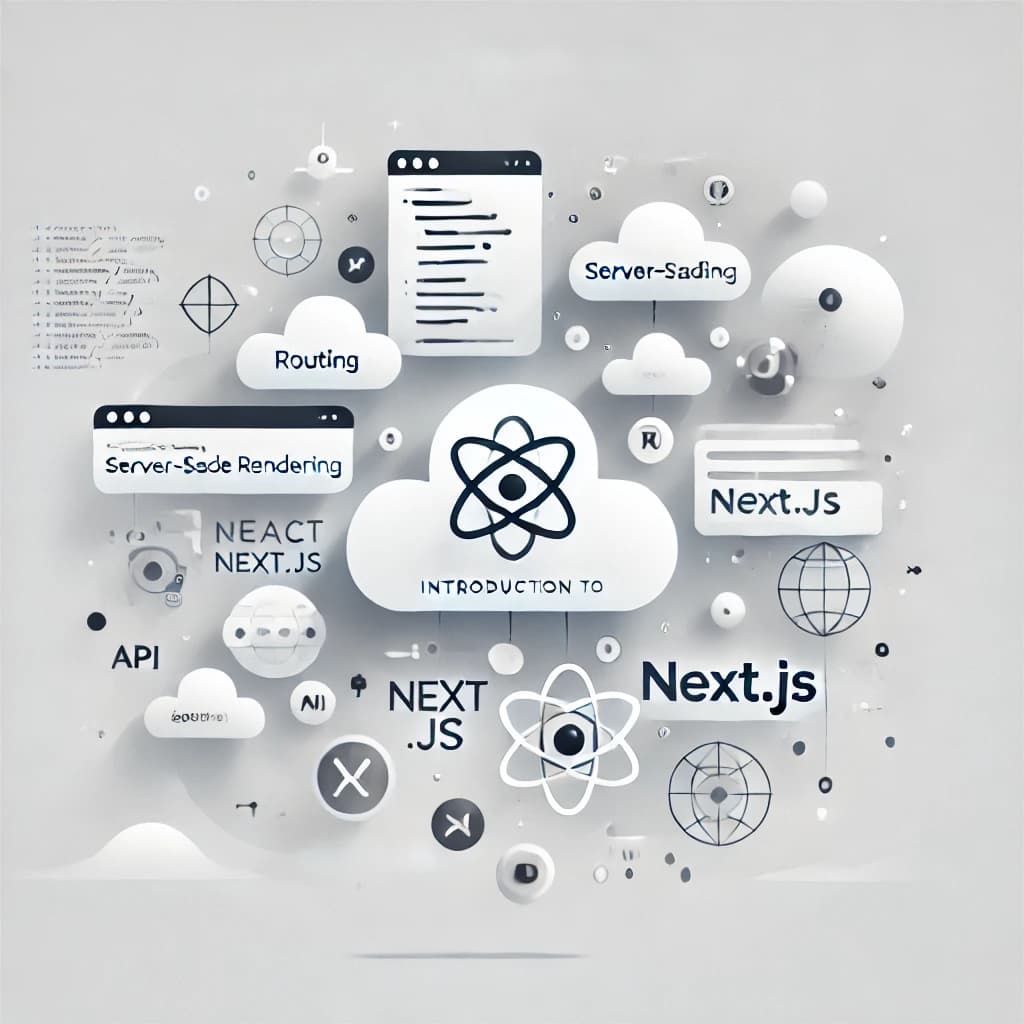

September 10, 2024 • 5 min read
Introduction to Next.js - The React Framework for Production
Next.js has revolutionized React development by providing a powerful, production-ready framework that combines developer experience with cutting-edge performance features. In this comprehensive guide, we'll explore what makes Next.js the go-to choice for building modern web applications.
What is Next.js?
Next.js is a React framework developed by Vercel that enables functionality such as server-side rendering, static site generation, and API routes out of the box. It's designed to help developers build high-performance web applications with the best developer experience.
Key Features at a Glance:
- Server-Side Rendering (SSR)
- Static Site Generation (SSG)
- Incremental Static Regeneration (ISR)
- API Routes
- File-based Routing
- Built-in Image Optimization
- Zero-Config Setup
- TypeScript Support
Why Choose Next.js?
Next.js has become the preferred choice for many developers and organizations for several compelling reasons:
1. Enhanced Performance
Next.js provides multiple rendering strategies that can be used to optimize your application:
// pages/static.js - Static Site Generation (SSG)
export async function getStaticProps() {
const data = await fetchData()
return {
props: { data },
revalidate: 60 // ISR: Revalidate every 60 seconds
}
}
// pages/server.js - Server-Side Rendering (SSR)
export async function getServerSideProps() {
const data = await fetchData()
return {
props: { data }
}
}2. Improved SEO
Next.js's server-side rendering capabilities ensure that search engines can effectively crawl your content:
// pages/blog/[slug].js
import Head from 'next/head'
export default function BlogPost({ post }) {
return (
<>
<Head>
<title>{post.title}</title>
<meta name="description" content={post.excerpt} />
<meta property="og:title" content={post.title} />
</Head>
<article>{/* Post content */}</article>
</>
)
}3. Developer Experience
Next.js provides an excellent developer experience with features like Fast Refresh and intuitive file-based routing:
// pages/index.js - Home page
export default function Home() {
return <h1>Welcome to my site!</h1>
}
// pages/blog/index.js - Blog listing
export default function Blog() {
return <h1>Blog Posts</h1>
}
// pages/blog/[slug].js - Dynamic blog post pages
export default function Post({ slug }) {
return <h1>Post: {slug}</h1>
}Getting Started with Next.js
Installation and Setup
Create a new Next.js project using the following commands:
# Using npm
npx create-next-app@latest my-next-app
# Using yarn
yarn create next-app my-next-app
# Using pnpm
pnpm create next-app my-next-appThe CLI will ask you several questions to customize your setup:
Would you like to use TypeScript? No / Yes
Would you like to use ESLint? No / Yes
Would you like to use Tailwind CSS? No / Yes
Would you like to use `src/` directory? No / Yes
Would you like to use App Router? No / Yes
Would you like to customize the default import alias? No / YesProject Structure
A typical Next.js project structure looks like this:
my-next-app/
├── app/ # App Router directory
│ ├── layout.js # Root layout
│ └── page.js # Home page
├── components/ # React components
├── public/ # Static files
├── styles/ # CSS files
├── next.config.js # Next.js configuration
└── package.json # Project dependenciesAdvanced Features and Patterns
1. Data Fetching Patterns
Next.js provides multiple ways to fetch data:
// Client-side data fetching
import useSWR from 'swr'
function Profile() {
const { data, error } = useSWR('/api/user', fetcher)
if (error) return <div>Failed to load</div>
if (!data) return <div>Loading...</div>
return <div>Hello {data.name}!</div>
}
// Server-side data fetching
async function getData() {
const res = await fetch('https://api.example.com/data')
if (!res.ok) throw new Error('Failed to fetch data')
return res.json()
}
export default async function Page() {
const data = await getData()
return <main>{/* Use data */}</main>
}2. API Routes
Create backend API endpoints easily:
// app/api/hello/route.js
export async function GET(request) {
return new Response(JSON.stringify({ message: 'Hello!' }), {
headers: { 'content-type': 'application/json' },
})
}3. Image Optimization
Next.js provides automatic image optimization:
import Image from 'next/image'
function Banner() {
return (
<Image
src="/banner.jpg"
alt="Site Banner"
width={1200}
height={600}
priority
className="rounded-lg"
/>
)
}Performance Optimization Techniques
1. Route Segment Config
// app/page.js
export const dynamic = 'force-dynamic'
export const revalidate = 602. Loading and Error States
// app/loading.js
export default function Loading() {
return <div>Loading...</div>
}
// app/error.js
'use client'
export default function Error({
error,
reset,
}) {
return (
<div>
<h2>Something went wrong!</h2>
<button onClick={reset}>Try again</button>
</div>
)
}3. Metadata API
// app/layout.js
export const metadata = {
title: {
template: '%s | My Website',
default: 'My Website',
},
description: 'Welcome to my website',
openGraph: {
title: 'My Website',
description: 'Welcome to my website',
url: 'https://mywebsite.com',
siteName: 'My Website',
images: [
{
url: 'https://mywebsite.com/og.jpg',
},
],
locale: 'en_US',
type: 'website',
},
}Deployment and Production Considerations
1. Environment Variables
# .env.local
DATABASE_URL=postgresql://...
API_KEY=your_api_key// Access in your code
console.log(process.env.DATABASE_URL)2. Production Build
# Create production build
npm run build
# Start production server
npm start3. Deployment Platforms
- Vercel (Zero-config deployments)
- AWS Amplify
- Netlify
- Docker containers
Best Practices and Tips
-
Route Organization
- Keep related routes together
- Use shared layouts effectively
- Implement proper loading and error states
-
Performance
- Use appropriate data fetching methods
- Implement caching strategies
- Optimize images and fonts
-
Security
- Validate API routes
- Implement proper authentication
- Secure environment variables
Tools and Resources
-
Development Tools
- Next.js DevTools
- Chrome Lighthouse
- React Developer Tools
-
Useful Libraries
next-authfor authenticationswror@tanstack/react-queryfor data fetchingtailwindcssfor styling
-
Learning Resources
Conclusion
Next.js continues to evolve and improve, making it an excellent choice for building modern web applications. Its combination of performance features, developer experience, and growing ecosystem makes it a powerful tool in any web developer's arsenal.
Next Steps
- Set up your first Next.js project
- Explore the App Router
- Experiment with different rendering strategies
- Join the Next.js community
- Build something awesome!
Remember that Next.js is constantly evolving, so keep an eye on the official documentation and release notes for the latest features and best practices.